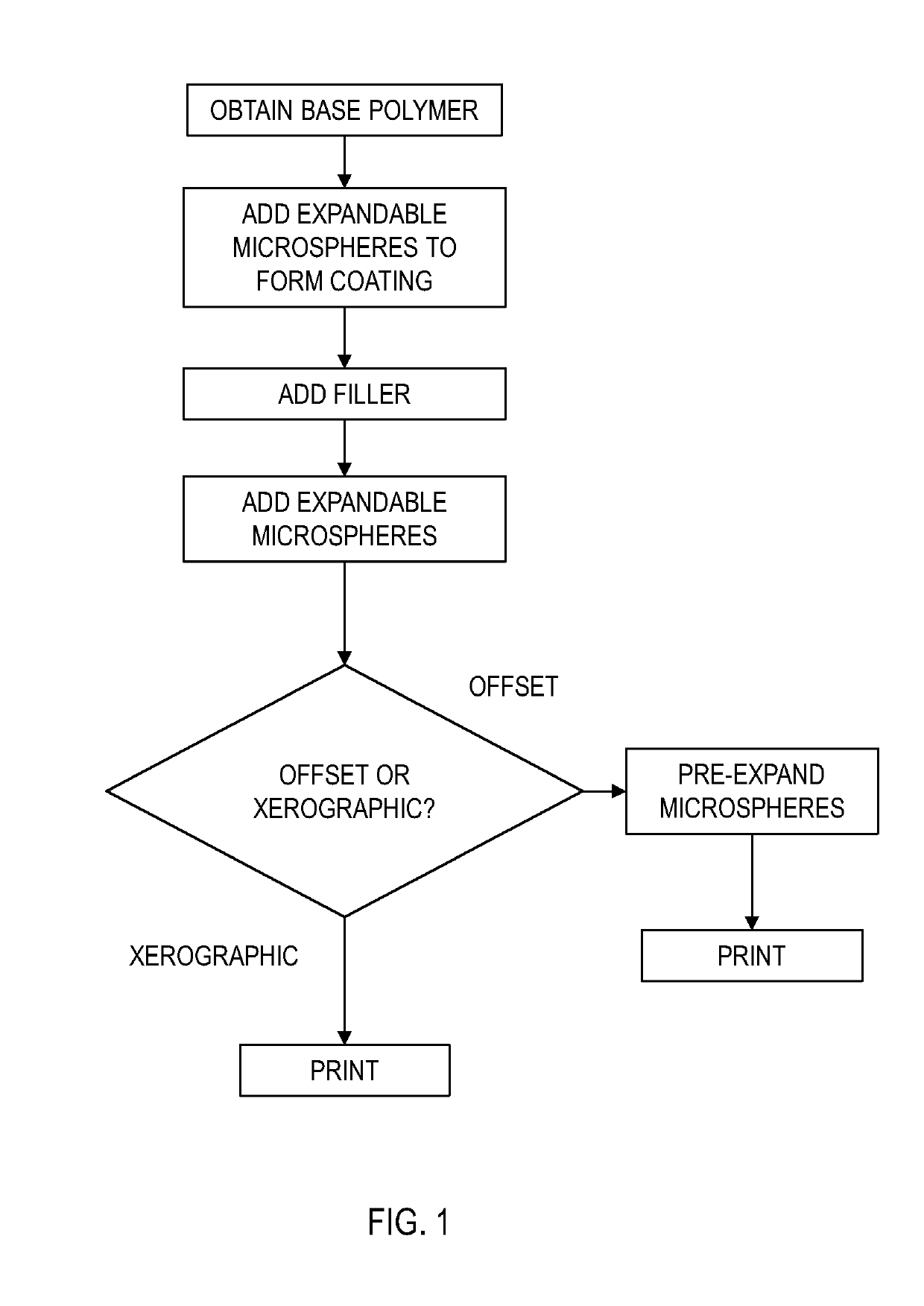Haptic coating
a technology of haptic sensation and coating, applied in the direction of coating, pattern printing, printing, etc., can solve the problems of not being able to achieve haptic sensations, not having to apply post-print coating applications or over-laminating films
- Summary
- Abstract
- Description
- Claims
- Application Information
AI Technical Summary
Benefits of technology
Problems solved by technology
Method used
Image
Examples
example 1
[0017]One part Expancel U31 microspheres was added to 5 parts water to pre-wet the particles. To the slurry, one part of Lovel 20203 silica was added. The resulting slurry was blended into 13 parts Joncryl 624 acrylic resin. The final coating was applied to a 14-point claycoated coverstock from WestRock Corporation. The coating was metered across the substrate with a #16 wire-wound rod. The coating was dried at 120° F. for five minutes to remove the water portion of the coating. The coverstock was printed in a Xerox iGen laser print engine.
example 2
[0018]One part Expancel U31 microspheres were added to 5 parts water to pre-wet the particles. To the slurry, one part of Lovel 20203 silica was added. The resulting slurry was blended into 13 parts Joncryl 624 acrylic resin. The final coating was applied to a 14-point claycoated coverstock from WestRock Corporation. The coating was metered across the substrate with a #16 wire-wound rod. The coating was dried at 120° F. for five minutes to remove the water portion of the coating. The coated coverstock was passed through a heated laminator set at 300° F. and 20 psi pressure between the heated rollers. The heat activated the coating causing expansion of the Expancel microspheres. The coating was then over coated with a solution of Michelman DigiPrime 5000 with a #6 wire wound rod. The DigiPrime acts as a primer for the inks that are used in HP Indigo digital engines.
example 3
[0019]One part Expancel U31 microspheres were added to 5 parts water to pre-wet the particles. To the slurry, one part of Lovel 20203 silica was added. The resulting slurry was blended into 13 parts Joncryl 624 acrylic resin. One-tenth of a part of Chanel No. 5 perfume was added to the coating. The final coating was applied to a 14-point claycoated coverstock from WestRock Corporation. The coating was metered across the substrate with a #16 wire-wound rod. The coating was dried at 120° F. for five minutes to remove the water portion of the coating. The coverstock was printed in a Xerox iGen laser print engine.
[0020]The printed products from the three examples all exhibited a soft suede-like feel across the printed surfaces. The purpose of adding the Chanel perfume was to produce a printed article that releases a desirable fragrance over an extended period. The expanded spheres occupy the entire upper surface and fragrance molecules are entombed in the underlying binder polymer but c...
PUM
| Property | Measurement | Unit |
|---|---|---|
| Temperature | aaaaa | aaaaa |
| Volume | aaaaa | aaaaa |
| Surface | aaaaa | aaaaa |
Abstract
Description
Claims
Application Information
 Login to View More
Login to View More - R&D
- Intellectual Property
- Life Sciences
- Materials
- Tech Scout
- Unparalleled Data Quality
- Higher Quality Content
- 60% Fewer Hallucinations
Browse by: Latest US Patents, China's latest patents, Technical Efficacy Thesaurus, Application Domain, Technology Topic, Popular Technical Reports.
© 2025 PatSnap. All rights reserved.Legal|Privacy policy|Modern Slavery Act Transparency Statement|Sitemap|About US| Contact US: help@patsnap.com

